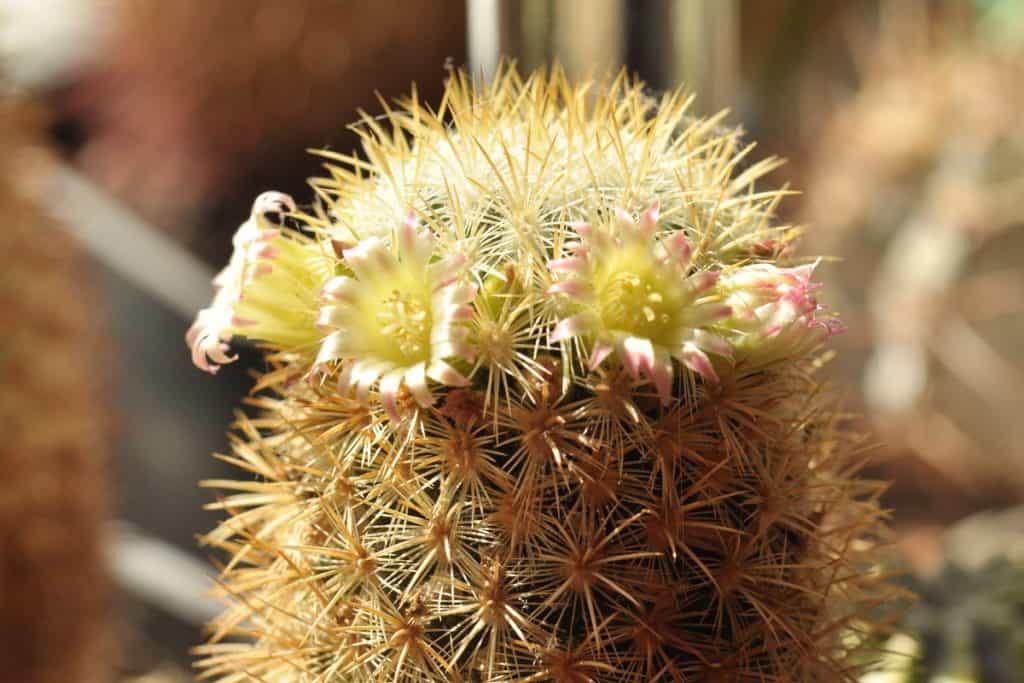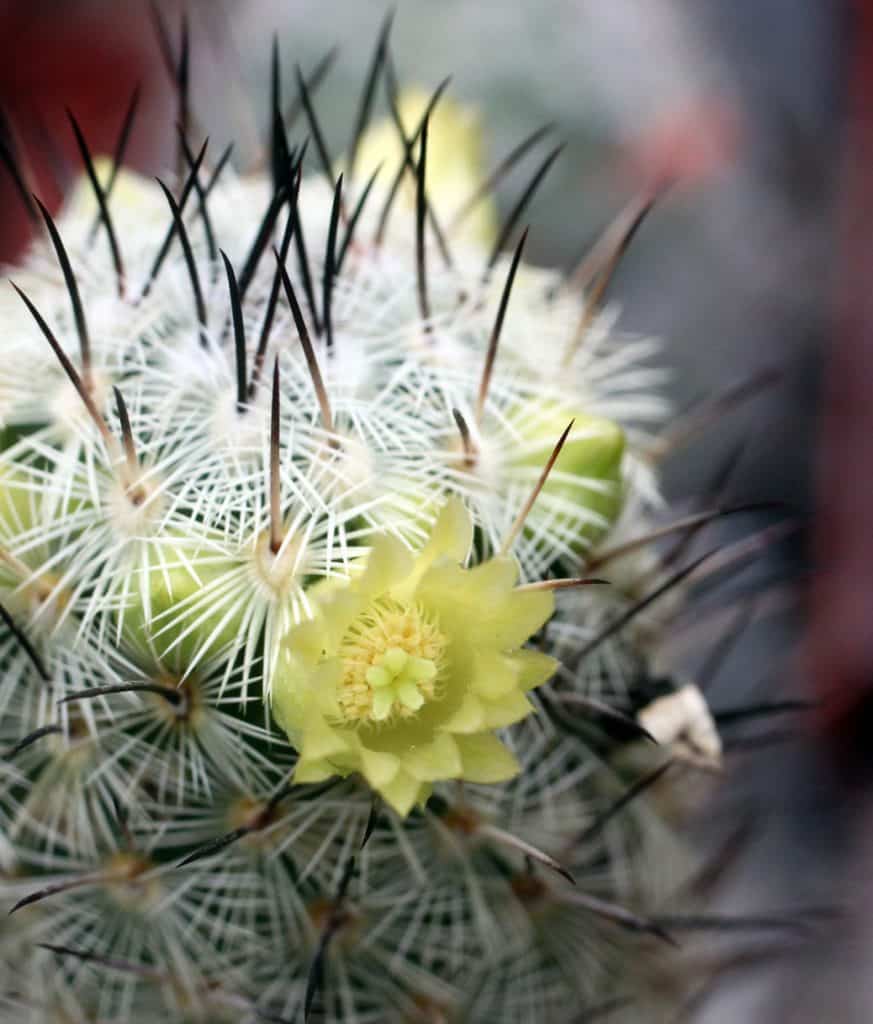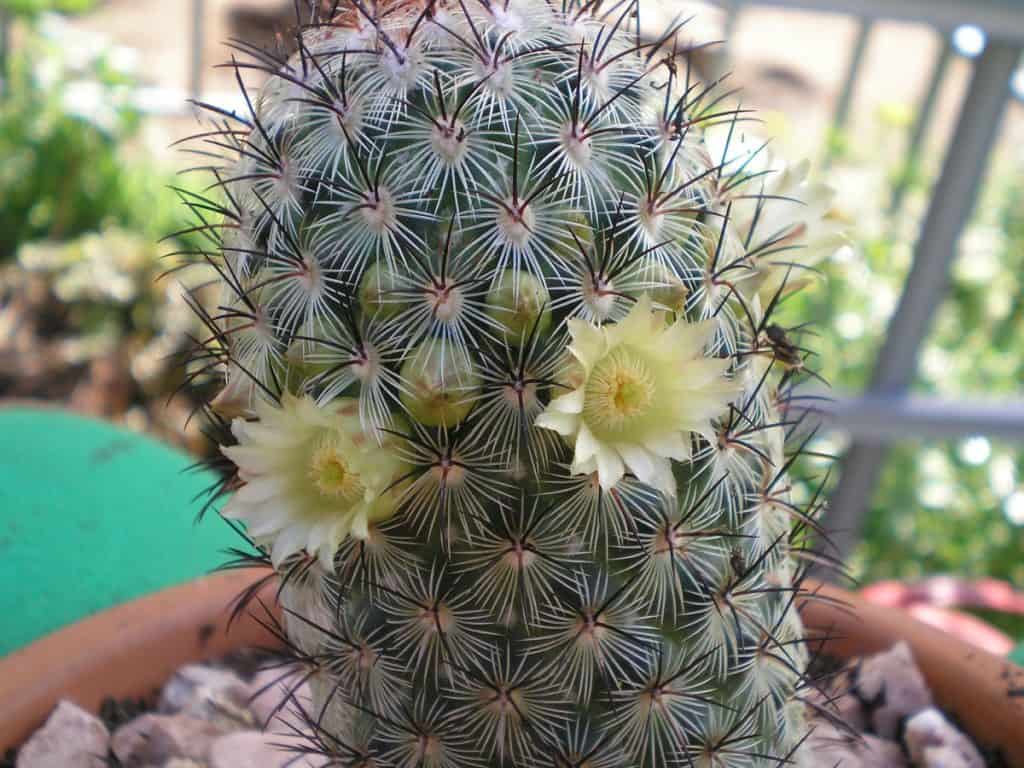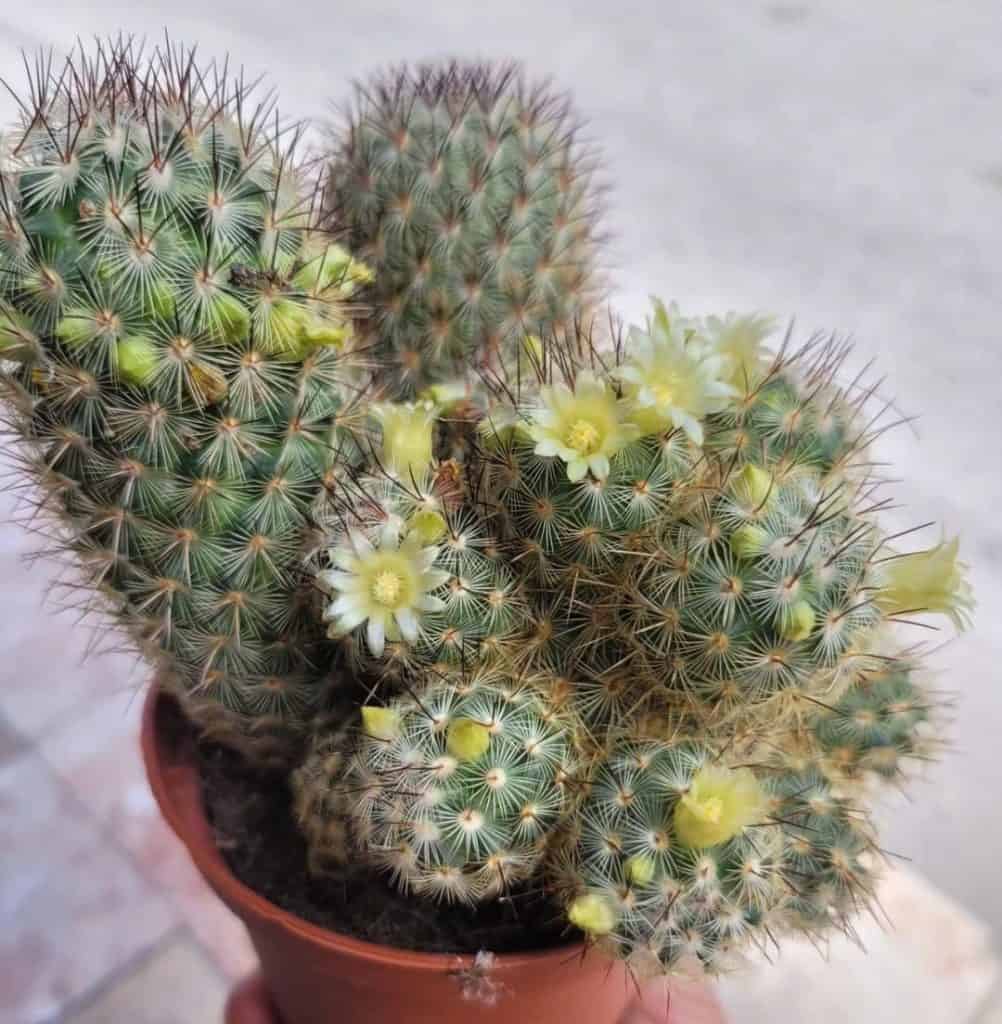Mammillaria microhelia: Characteristics and Care
Imagine a tiny, spiky cactus bundle adorned with a crown of delicate bell-shaped blooms in sunny shades of yellow, cream and green. Meet the Mammillaria microhelia, a pint-sized desert dweller with big character! This charming little cactus from the arid regions of Mexico is about to steal your heart with its miniature stature and eye-catching spine patterns. Get ready to take a closer look at this resilient beauty!

Contents
About Mammillaria microhelia
Also fondly called the Biznaguita cactus, the Mammillaria microhelia forms petite clumps of columnar or cylindrical stems, each covered in a distinctive array of white and brown spines. These spiny stems can grow individually or cluster together, reaching up to 8 inches tall. The real showstoppers, however, are the cactus’ dainty bowl-shaped flowers that bloom at each stem’s tip, painting the plant in a vibrant palette every spring.
Related Post:
39 Mammillaria Cactus Types and Care [With Pictures]
How to Care for Mammillaria microhelia
Light Requirements
Like a true sun-worshipper, the Mammillaria microhelia thrives in intense, direct light. If growing it indoors, position it near a sunny window or use a grow light to mimic its natural desert habitat. Gradually introduce more light to prevent sun shock, and your cactus will reward you with lush, colorful growth.
Water Needs
Take a minimalist approach when watering this rot-prone cactus. Only water when the soil is completely dry, allowing it to drain fully before watering again. Apply water directly to the soil to avoid getting moisture on the spines.
In the growing season, plan to water every 7-10 days, adjusting frequency as needed. But in winter, put away the water can completely and let your Mammillaria microhelia go fully dormant and dry.

Soil Preference
A well-draining cactus soil mix is crucial for the Mammillaria microhelia’s success. Choose a gritty, porous blend made for cacti and succulents, or create your own by mixing potting soil with sand, perlite or pumice. Good drainage and airflow around the roots will keep this desert native thriving.
Fertilizing Tips
During the growing season, treat your cactus to a balanced, water-soluble fertilizer formulated for cacti every 4-6 weeks. Avoid fertilizers high in nitrogen, as too much can cause lush, stretched growth. In winter, skip fertilizing to allow the plant its annual rest period.
Temperature and Humidity
Warm and dry is the way to go! Mammillaria microhelia loves temperatures between 70-90°F during the day and a 10-15°F drop at night in the growing season. In winter, allow temperatures to dip lower to around 50-60°F to simulate the plant’s annual dormancy period.
Average household humidity is ideal year-round, but be sure to increase airflow in summer to prevent fungal issues. These cozy indoor conditions will keep your pint-sized cactus performing its best.
With its winter dormancy requirements met by the cooler temperatures, your Mammillaria microhelia will rest until spring, when it will delight you once again with a flush of new growth and vibrant blooms. Just be sure to adjust watering and stop fertilizing during this resting phase.

Pests and Problems
Well-cared-for plants in a gritty mix with good airflow should avoid most pests. Watch for:
- Spider mites – combat with regular misting
- Mealybugs – remove aerial and root varieties
- Scales – rarely an issue
The biggest threat is rot from overwatering or poor ventilation. Provide excellent drainage and airflow, as fungicides are ineffective against rot.
Pruning Tips
Pruning isn’t required for the Mammillaria microhelia, but you can remove any dead or damaged stems as needed using sterilized shears. Wear gloves to protect yourself from those sharp spines!
Potting and Repotting
These slow-growing cacti prefer to be somewhat root-bound, so only repot every 2-3 years into a pot 1-2 inches wider than the previous one. Spring is the ideal time for repotting to give them the whole growing season to adjust.
Mammillaria microhelia Propagation Methods

Mammillaria microhelia can be propagated from seeds or cuttings, though seed propagation is more common. Here are the steps for each method:
From Seed:
- Sow seeds after the last spring frost, once temperatures remain warm (around 70-80°F).
- Use a well-draining seed-starting mix and cover seeds with just a thin layer of soil.
- Keep the seeded tray warm (around 70-80°F) and moist – seeds should germinate within 7-14 days.
- Once seedlings are well-rooted (1-2 weeks), gradually remove any cover and increase ventilation.
- Avoid direct sun at first – slowly acclimate young plants to brighter conditions over time.
- When seedlings are a few months old, you can begin transferring them to individual pots.
From Cuttings (rare):
- Use a sharp, sterile knife to remove offsets or pads from a mature parent plant.
- Allow the cuttings to callous over for 7-10 days before planting.
- Plant the calloused cuttings in a well-draining cactus/succulent soil.
- Water sparingly until roots are established and new growth appears.
No matter which propagation method you choose, be sure to handle this miniature cactus with care due to its sharp spines. With a little patience, you’ll soon have more pint-sized Mammillaria microhelia to enjoy!
